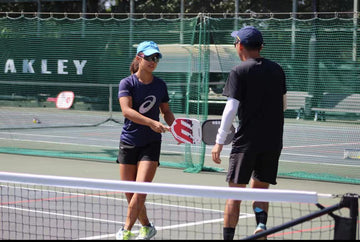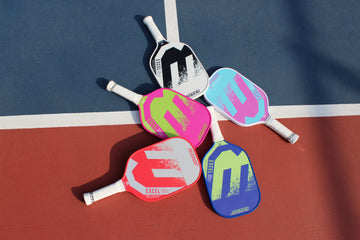Mastering Pickleball: Understanding the 5 Serving Rules

Pickleball is a dynamic and engaging sport that requires players to understand and follow specific rules, especially when it comes to serving. Whether you're new to the game or looking to refine your skills, mastering the serving rules is essential. In this guide, we'll explore the five serving rules in pickleball and provide tips on how to implement them effectively.
Introduction
Serving in pickleball is a crucial aspect of the game, as it initiates each point and sets the tone for the rally. By understanding and adhering to the serving rules, players can ensure fair play and maintain the integrity of the game. Let's dive into the five serving rules in pickleball:
The Five Serving Rules in Pickleball
-
Underhand Serve: According to the rules of pickleball, the serve must be made underhand, with the paddle below the waist. This rule helps promote a fair and consistent serving technique among players.
-
Contact Below the Waist: To execute a legal serve, the player must make contact with the ball below the waist. This rule ensures that the serve is made from a consistent and controlled position, preventing any advantage from a higher contact point.
-
Diagonal Serve: The serve must be hit diagonally cross-court and land in the opponent's service court. This rule encourages strategic placement of the serve, adding an element of strategy to the game.
-
Double Bounce Rule: Before the serve can be volleyed, it must bounce once on the server's side and once on the opponent's side. This rule prevents players from executing overly aggressive serves that bypass the opponent's ability to return the ball.
-
Non-Volley Zone: During the serve, both the server and the receiver must remain outside the non-volley zone, which is the area within 7 feet on either side of the net. This rule prevents players from gaining an unfair advantage by volleying the ball before it bounces.
Implementing the Rules
To effectively implement these serving rules, players should focus on developing a consistent and controlled serving technique. Practicing serves from different positions on the court can help players improve their accuracy and placement. Additionally, understanding the rules allows players to anticipate their opponent's strategy and adjust their gameplay accordingly.
Mastering the serving rules in pickleball is essential for players looking to improve their game. By understanding and implementing these rules, players can enhance their serving technique, strategically place their serves, and maintain fair play on the court. Whether you're a beginner or an experienced player, following these rules will help you serve like a pro and elevate your pickleball skills.





